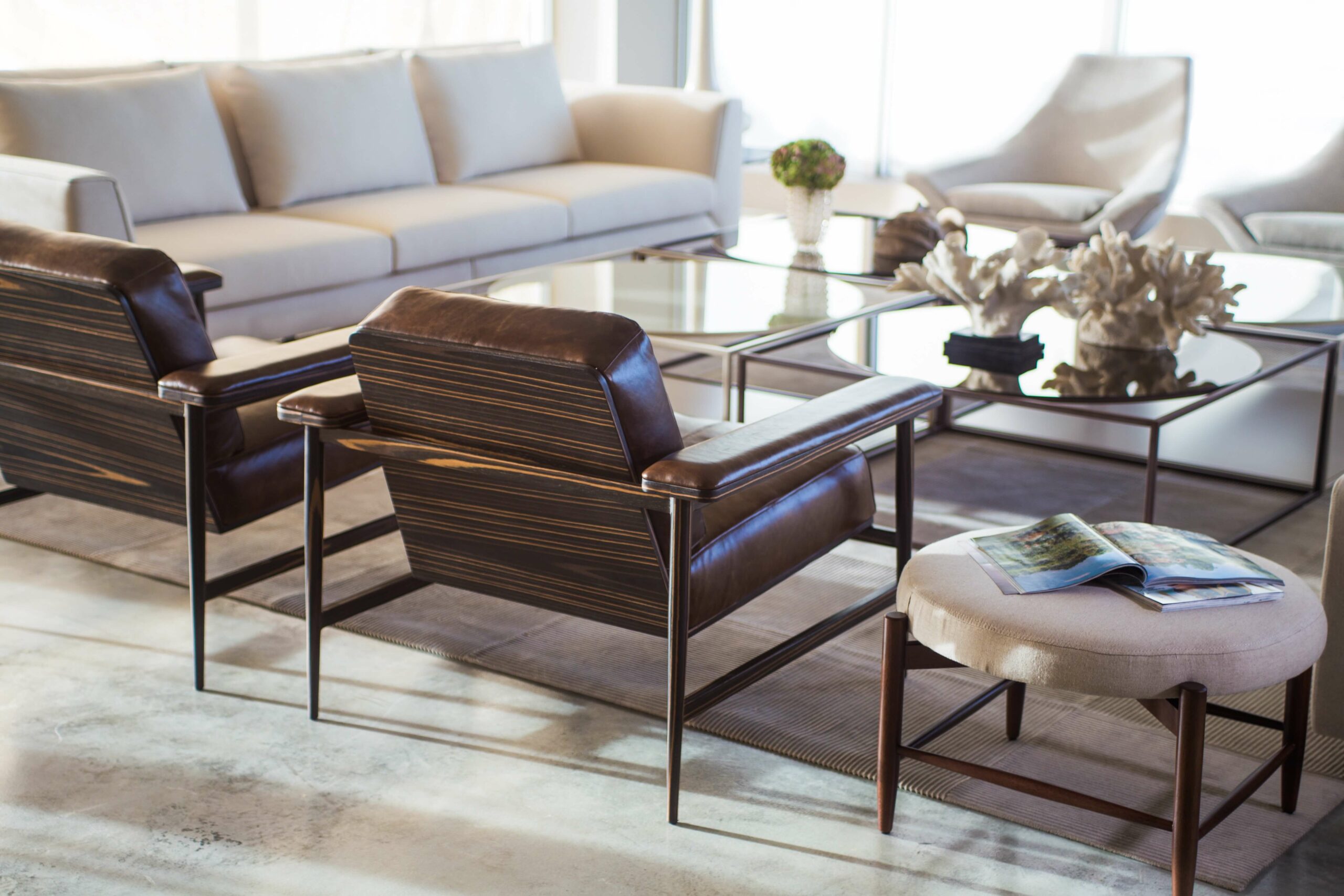
16 Nov Room Rearranging 101: How to Arrange Each Piece Like an Expert
It’s easy to find yourself paralyzed by indecision when faced with an empty room. Arranging furniture and deciding where to place each element of your living space can be a difficult and time-consuming task. Enjoy these expert tips on how to arrange furniture in a living room, many of which are applicable to all the spaces in your house. First, we’ll give 12 pointers for designing a layout that flows well, followed by sample layouts that might suit your particular living room. Finally, we’ll answer some commonly asked questions about furniture placement. Let’s start with several tried-and-true tips to help you arrange the furniture and decor in your living space.
Draw a Floor Plan
It’s best to begin with a comprehensive plan. Take your room’s measurements to create a layout using an online tool or old-fashioned pen and graph paper. Measure your existing pieces of furniture, then cut out pieces of paper to represent each one, which you can move around on the floor plan. This process will help you determine what’s most important to you when designing a room. Is it the flow of foot traffic, the stylistic elements, facilitating conversations among visitors or drawing attention to the entertainment system? Once you’ve made a plan, you’ll have a better idea of where to start.
Pick a Focal Point
It’s important to choose a focal point for your living room. This could be a fireplace, large window, TV, bookshelf, coffee table or piece of art. To decide, ask yourself: What do you want people to notice first when they walk into the room? Once you’ve chosen a focal point, you can design around it, angling furniture and decor to draw the eye to it.
Bring Balance
To bring balance to your space, be mindful of the shapes and colors of your furniture and decor. Group pieces to create arrangements with an appealing variety of forms and hues. One way to create balance is by juxtaposing brightly patterned elements with neutral ones. For example, if you have a colorful accent chair that stands out, place it next to muted decor while incorporating that same accent color elsewhere in the room. This will help make your space both aesthetically pleasing and visually interesting.
Create Conversation Areas
It’s important to create conversation areas in a living room. Position sofas and chairs so that seated guests can talk with one another naturally, without straining their necks or having to move the furniture. In a small room, you can focus on just one spot where people can sit and chat, but in a large room, you might want to create several such zones. Creating conversation areas involves anticipating how people will use the space. In the same vein, don’t just leave a chair floating by itself. Place it near a sofa, where the sitter can easily interact with others. Or, to facilitate reading or other activities, pair it with a side table and floor lamp.
Ground the Room with a Rug
In your main seating area, tie the elements together with a large rug. Make sure it is big enough to lie under all the furniture. The exception would be substantial pieces, such as a sofa, which can sit with its front legs on and its back legs off the rug.
Consider Traffic Flow
Style is a big part of furniture layout, but traffic flow is even more important in creating a functional space. Make sure there is a clear and comfortable path throughout the room for people to navigate. To do so, place furniture several feet apart — even farther in places where people will be walking often.
Layer the Lighting
To produce attractive layers of illumination in your room, use a mix of sources: overhead fixtures to produce ambient light, sconces or floor lamps for accent lighting and table lamps for task lighting. For variety, stagger the heights of the different sources. Point the fixtures in different directions so that they play off one another in engaging ways. Pair floor lamps with lounge chairs, and use stylish table lamps on end tables to brighten darker corners.
Think about Scale and Proportion
Taking into account scale and proportion will help you group pieces of furniture in natural-looking arrangements.
- Scale denotes the size of an object.
- Proportion refers to the relationship between the sizes of different objects.
For example, one large piece of furniture can be balanced by two smaller ones. This is why setting two chairs across from a sofa is an often stylish and practical choice. You might also consider diversifying the height of your decor elements. Vary the heights of chair backs, artwork placements and accessories on a table or shelf.
Introduce Some Breathing Room
It can be tempting to push furniture against the walls to free up space. However, pulling pieces several feet, or at least several inches, out from the wall provides more breathing room and actually makes an interior feel bigger. For example, moving a sofa and accent chair closer to the center of the room can help create better airflow as well as cozier conversation zones.
Place Tables an Arm’s Length from Seating
A good rule of thumb is to set tables an arm’s length away from seating. For instance, place a coffee table about 18 inches from a sofa so that it is within reach but not too close. If you want to set side tables at each end of a sofa, all the pieces should be approximately the same height so that the arrangement feels unified.
Keep Windows Clear
In general, you’ll want to arrange your furniture so that it doesn’t block your windows, thus allowing natural light to flood in and illuminate the room. Placing a sofa below a window is fine as long as there are several inches of space between the top of one and the bottom of the other.
Tie It All Together with Artwork
Finally, a great way to tie your layout together is to choose wall art that complements your decor and color scheme. Above a sofa or a console table is a good place to hang an artwork. Make sure the work is big enough to hold its own against the furniture — it should span two-thirds the width of the piece below it.

